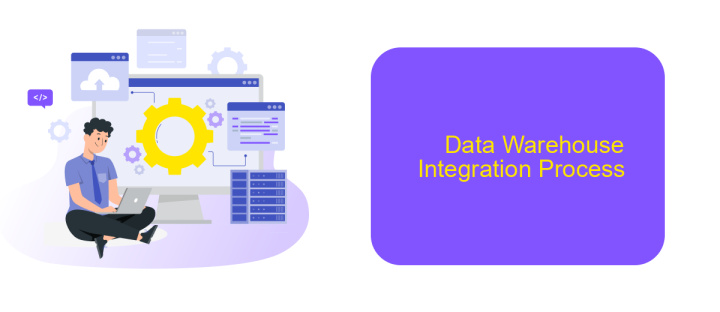Data Warehouse Integration
Data Warehouse Integration is a critical process for modern enterprises seeking to harness the full potential of their data. By consolidating disparate data sources into a unified repository, businesses can achieve enhanced data accuracy, improved decision-making, and streamlined operations. This article explores the key strategies, challenges, and benefits associated with integrating data warehouses, providing valuable insights for organizations aiming to optimize their data management practices.
Introduction
Data Warehouse Integration is a critical component for organizations aiming to consolidate data from various sources into a single, unified repository. This process enhances data accessibility, improves decision-making, and ensures consistency across the enterprise. By integrating disparate data systems, businesses can achieve a comprehensive view of their operations and customer interactions.
- Streamlined data management
- Enhanced data quality and consistency
- Improved decision-making capabilities
- Cost and time efficiency
One of the tools that facilitate seamless Data Warehouse Integration is ApiX-Drive. This service allows for the automation of data transfers between different platforms, ensuring that data is synchronized and up-to-date. With its user-friendly interface and robust functionality, ApiX-Drive simplifies the integration process, making it accessible even for organizations without extensive technical expertise. By leveraging such tools, companies can focus on deriving insights from their data rather than getting bogged down by the complexities of integration.
Data Integration Challenges

Data integration in a data warehouse environment presents numerous challenges, primarily due to the heterogeneous nature of data sources. These sources often have different formats, structures, and access protocols, making it difficult to create a unified view. Ensuring data quality is another significant issue, as inconsistencies, duplicates, and missing values can compromise the integrity of the integrated data. Moreover, real-time data integration requires robust mechanisms to handle continuous data flow without latency, which can be technically demanding and resource-intensive.
Another challenge involves the complexity of data transformation processes. Converting data from diverse sources into a consistent format suitable for analysis often requires sophisticated ETL (Extract, Transform, Load) tools. Services like ApiX-Drive can simplify this process by offering automated data integration solutions. ApiX-Drive allows seamless connection and synchronization between various applications and databases, reducing the manual effort required for integration. However, even with such tools, maintaining security and compliance with data governance policies is crucial, adding another layer of complexity to the integration process.
Data Warehousing Concepts

Data warehousing is a critical component of business intelligence, providing a centralized repository for storing and managing large volumes of data from various sources. This enables organizations to perform complex queries and generate insightful reports, thereby supporting informed decision-making processes.
- Data Extraction: The process of collecting data from different sources, such as databases, cloud storage, and external APIs.
- Data Transformation: Converting the extracted data into a suitable format for analysis, which may involve cleaning, filtering, and aggregating the data.
- Data Loading: Inserting the transformed data into the data warehouse, ensuring it is organized and easily accessible for querying.
Integrating data from multiple sources can be complex, but services like ApiX-Drive simplify this process by automating data transfers and ensuring seamless connectivity between various applications. By leveraging such tools, businesses can streamline their data warehousing efforts, reduce manual intervention, and maintain data integrity across systems.
Data Warehouse Integration Process

Data warehouse integration is a critical process that ensures seamless data flow between different systems and the central data repository. This process involves extracting data from various sources, transforming it into a consistent format, and loading it into the data warehouse. Successful integration enables organizations to have a unified view of their data, facilitating better decision-making and analytics.
The integration process typically begins with data extraction, where data is collected from multiple sources such as databases, cloud storage, and third-party applications. The next step is data transformation, which involves cleaning, filtering, and converting data into a standardized format. Finally, the transformed data is loaded into the data warehouse for storage and analysis.
- Data Extraction: Collecting data from various sources.
- Data Transformation: Cleaning and standardizing data.
- Data Loading: Storing the transformed data in the warehouse.
Tools like ApiX-Drive can significantly streamline the integration process. ApiX-Drive offers automated data transfer and synchronization between different platforms, reducing manual effort and minimizing errors. By leveraging such tools, organizations can ensure efficient and reliable data warehouse integration, ultimately enhancing their data management capabilities.


Best Practices for Data Warehouse Integration
To ensure a seamless Data Warehouse Integration, it's crucial to prioritize data quality and consistency. Begin by establishing a robust data governance framework that includes data validation, cleansing, and transformation processes. Regularly audit and monitor data flows to identify and rectify discrepancies. Employ Extract, Transform, Load (ETL) tools to automate data integration tasks, ensuring that data from various sources is harmonized and accurately represented in the warehouse.
Another best practice is to leverage integration platforms like ApiX-Drive, which facilitate the connection of disparate data sources without the need for extensive coding. This platform supports real-time data synchronization, reducing latency and ensuring that your data warehouse is always up-to-date. Additionally, implement data security measures such as encryption and access controls to protect sensitive information. By following these best practices, you can achieve a reliable, efficient, and secure data warehouse integration.
FAQ
What is Data Warehouse Integration?
Why is Data Warehouse Integration important?
What are the common challenges in Data Warehouse Integration?
How can automation tools help in Data Warehouse Integration?
What are the best practices for successful Data Warehouse Integration?
Routine tasks take a lot of time from employees? Do they burn out, do not have enough working day for the main duties and important things? Do you understand that the only way out of this situation in modern realities is automation? Try Apix-Drive for free and make sure that the online connector in 5 minutes of setting up integration will remove a significant part of the routine from your life and free up time for you and your employees.

